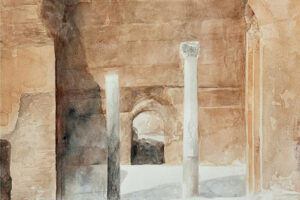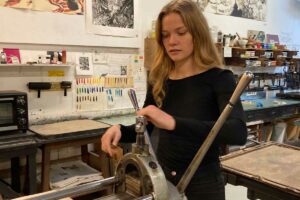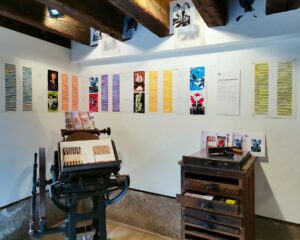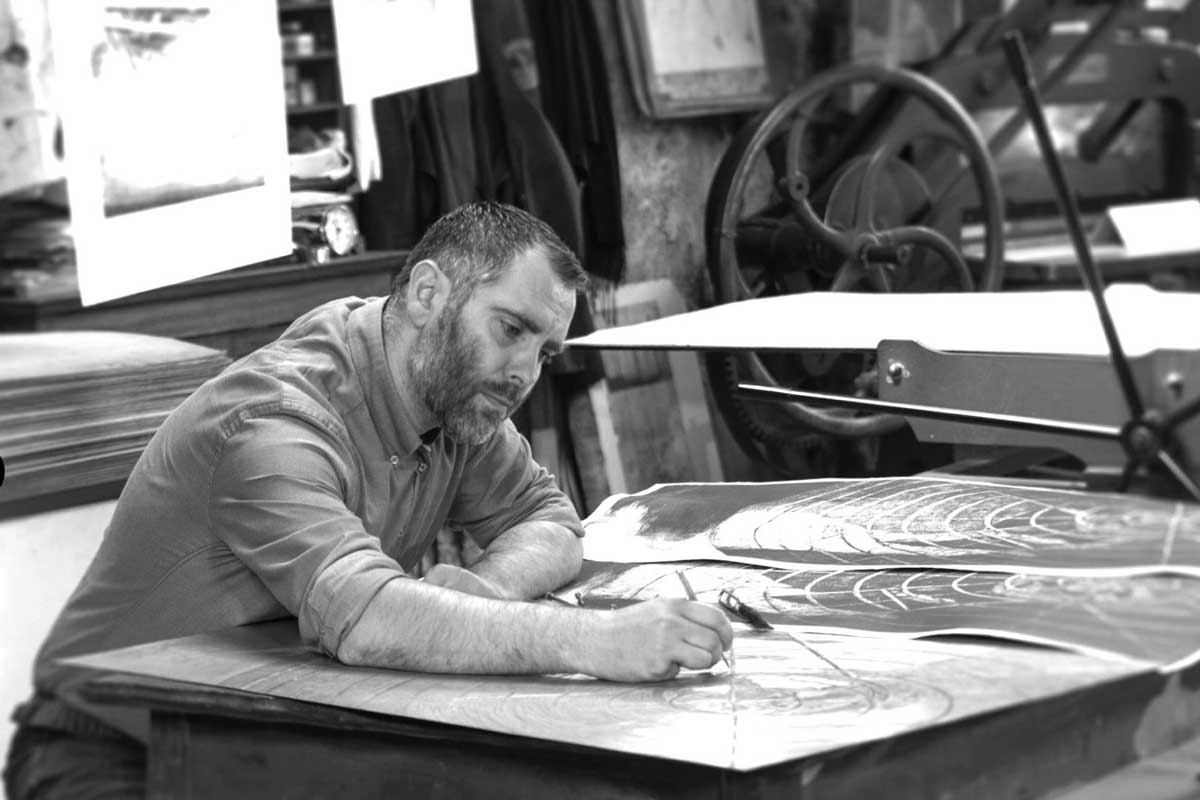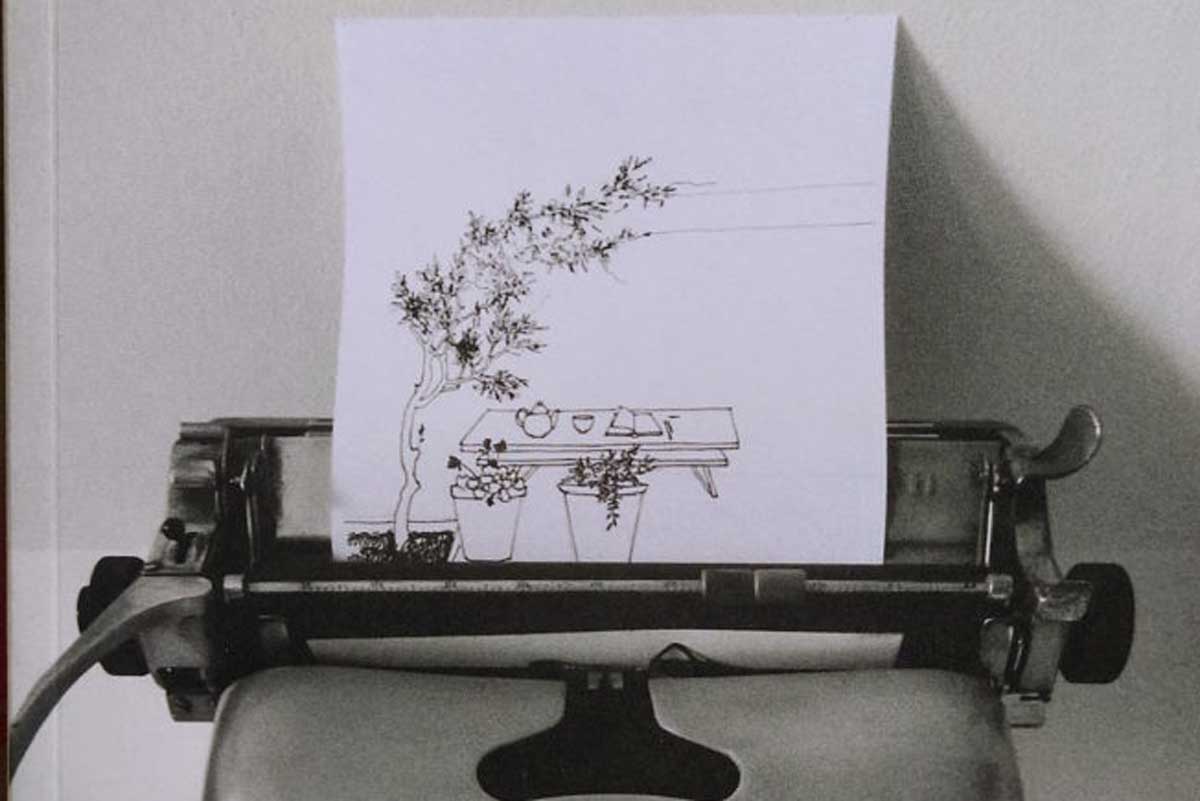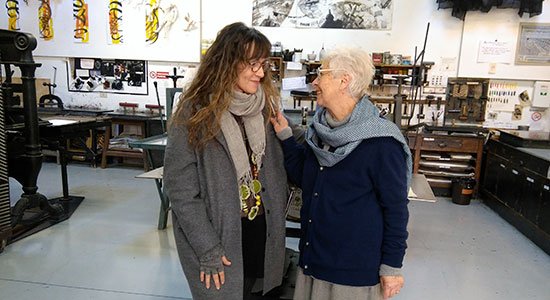May 18, 2017
Interview to Montana Torrey, Coordinator of Resident Artists in December 2016 – March 2017
Montana, how did you come know about this opportunity?
I have been doing artists’ residencies for a little over ten years, so I am constantly searching for opportunities such as this, as a way to engage with other artists and make work in new places. I found out about this fellowship on the College Art Association’s website, and after researching it, I was impressed with the Scuola’s history and the caliber of artists that attend.
How did you perceive the Scuola before being part of our organization?
I knew that it had an excellent reputation with universities, artists, and other organizations worldwide, so I trusted that it would be a positive experience. I spoke to colleagues who worked in printmaking, and they all held the Scuola in high esteem. The artists working at the Scuola activate and shape the residency, so it is a constantly shifting and morphing creative experience.
Tell us about your life in Venice at the Scuola.
I spent three months at the Scuola as the Resident Artists’ Coordinator, from late December to the beginning of spring at the end of March. In this window of time, I got a glimpse of the cycles of the city: its seasons, its fog, its tides, the sound of its bells, the crowds, the ever-shifting light. Sometimes I felt like Venice was two different places, one city with its own rhythm, and another over which an outside world was superimposed.
I was fascinated by the daily cycle of getting lost in the city and resurfacing with a new discovery, an experience both literal and metaphorical. This constant state of discovery could be slightly overwhelming and the Scuola provided a place of contemplation, exploration, dialogue and focus. I created my first printmaking installation at the Scuola and I saw my work develop in new ways that I was not expecting. I was able to learn so much about printmaking in such a condensed time and to use my visual experience of the city itself for the basis of my work. It was an incredibly productive time.

Bagnasciuga
Site specific installation. Montana Torrey’s exhibition at SGgallery, 13 March 2017
What impact did three months of your life in Italy as a practicing artist have on your life and art practice?
I am still meditating on the impact that living and working in Venice had on me as I try to incorporate the ways that I grew artistically into my practice. When I returned home, my suitcase was full of scraps of museum tickets, pebbles from the graves of famous writers, lemonwood for wood engraving, thread, soap smelling of Venice, and stacks of printed-paper. I had to exhume its contents gradually, because I wasn’t ready to pack these mementos away. My time in Venice represents a way of living that I hope to continue. It is incredibly easy to be inspired in a city like Venice, because it offers seemingly endless visual stimulation. Perhaps the most important lesson that I internalized during my time at the Scuola and Venice is to continue to seek beauty. Before coming to the Scuola, I was looking for a new motor for my work, and I think I have found it in printmaking. Ideas I began to investigate in Venice about spatial perception are ideas that I am expanding upon now that I am back in the U.S.
Did 3 months in Europe change your perspective on America?
Having spent extended amounts of time in Europe and elsewhere prior to this, I am not sure that it changed my perspective on America. It was, however, comforting and inspiring to be in a community of artists who are also struggling to make sense of and navigate the world during such a confusing and intense political time; it gave me hope. My perceptions of myself as an American artist did develop. Venice provided a unique and incomparable spatial experience that granted me a new perspective on my work, and enabled me to see how earlier work drawn from a cultural and spatial experience of the American landscape could be applied in a new context.
 Montana Torrey is an an American artist whose multi-disciplinary work employs the landscape as a metaphorical tool to investigate sites of opposition. Torrey has been an Artist-in-Residence at Skowhegan School of Painting and Sculpture, Headlands Center for the Arts, Vermont Studio Center, Catwalk Institute, and the Frank Lloyd Wright School of Architecture, among others. She has a BFA from The School of the Art Institute of Chicago and a MFA from The University of North Carolina at Chapel Hill.
Montana Torrey is an an American artist whose multi-disciplinary work employs the landscape as a metaphorical tool to investigate sites of opposition. Torrey has been an Artist-in-Residence at Skowhegan School of Painting and Sculpture, Headlands Center for the Arts, Vermont Studio Center, Catwalk Institute, and the Frank Lloyd Wright School of Architecture, among others. She has a BFA from The School of the Art Institute of Chicago and a MFA from The University of North Carolina at Chapel Hill.
Visit Montana’s website➤

